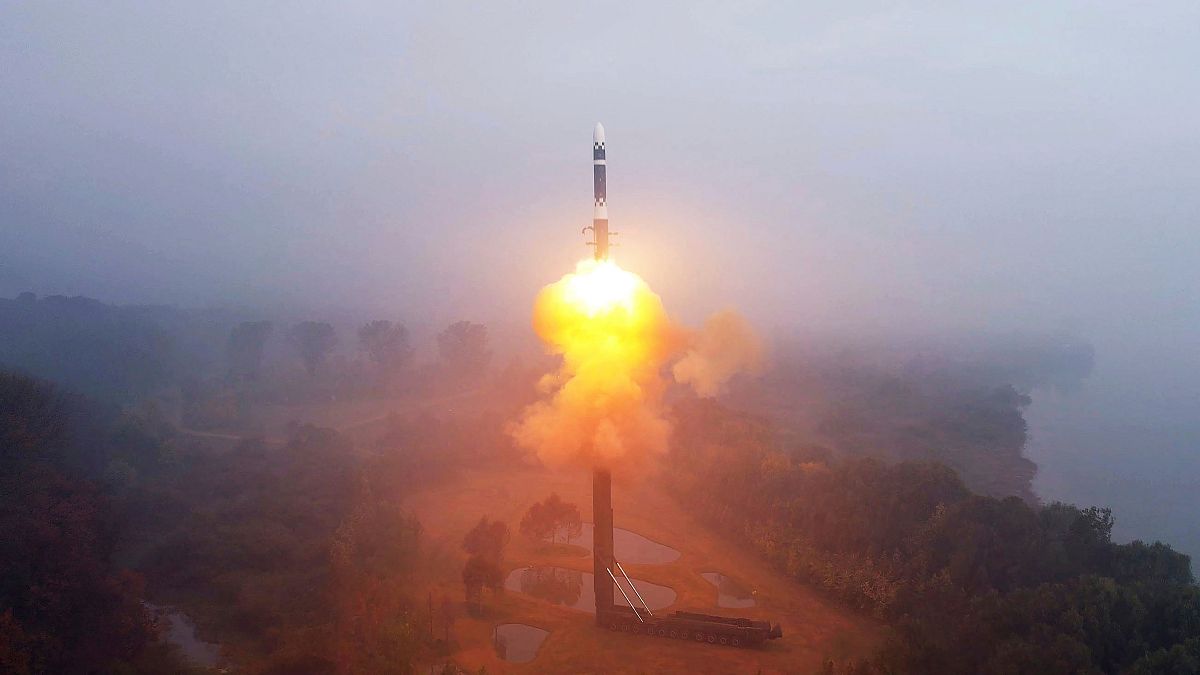The United States, South Korea, and Japan recently conducted a joint military drill in response to North Korea’s test of a new intercontinental ballistic missile aimed at reaching the US mainland. The drill included the deployment of a long-range bomber in efforts to display the three countries’ readiness and firm resolve to counter North Korea’s advancing nuclear and missile programs. This exercise marked the second trilateral aerial training between the US, South Korea, and Japan this year, highlighting the importance of cooperation in the face of regional security threats.
North Korea recently tested the Hwasong-19 ICBM, which demonstrated advancements in their missile technology by flying higher and staying in the air longer than previous tests. North Korean leader Kim Jong Un described it as a necessary military action to address external security threats from its rivals. Following this test, the US flew a B-1B bomber alongside South Korean and Japanese fighter jets near the Korean Peninsula. The deployment of such military assets in response to North Korean provocations is a common tactic used by the US to showcase their military strength.
Experts suggest that despite North Korea’s progress in their missile program, there are still technological challenges to overcome to develop functional ICBMs capable of delivering nuclear strikes on the US mainland. The size of the Hwasong-19 missile shown in state media photos and videos raises questions about its practicality in a combat scenario. The ICBM test, which came shortly before the US presidential election and amidst international criticism of North Korea’s involvement in the conflict between Russia and Ukraine, was seen as an attempt to gain American attention and assert its military capabilities.
The US has utilized the deployment of long-range bombers, aircraft carriers, and submarines in response to major North Korean missile tests, signaling a strong military presence in the region. North Korea has historically responded negatively to such actions, accusing the US of conspiring to invade the country and conducting additional weapons tests in retaliation. The joint military exercises between the US, South Korea, and Japan aim to send a message of unity and preparedness in the face of growing regional tensions.
By conducting trilateral drills and showcasing their military capabilities, the US, South Korea, and Japan emphasize the importance of cooperation in addressing shared security concerns. The involvement of a long-range bomber in the recent exercise further demonstrates a commitment to deterring any potential aggression from North Korea. As the situation on the Korean Peninsula remains tense, diplomatic efforts alongside military readiness play a critical role in maintaining stability and preventing further escalation of conflict in the region.
Overall, the joint drill between the US, South Korea, and Japan serves as a strategic response to North Korea’s recent missile test, showcasing a united front against potential threats. The involvement of the B-1B bomber in the exercise underscores the three countries’ preparedness to counter North Korea’s military advancements. As tensions persist in the region, continued cooperation and coordination between these allies are essential for promoting peace and security in Northeast Asia.










